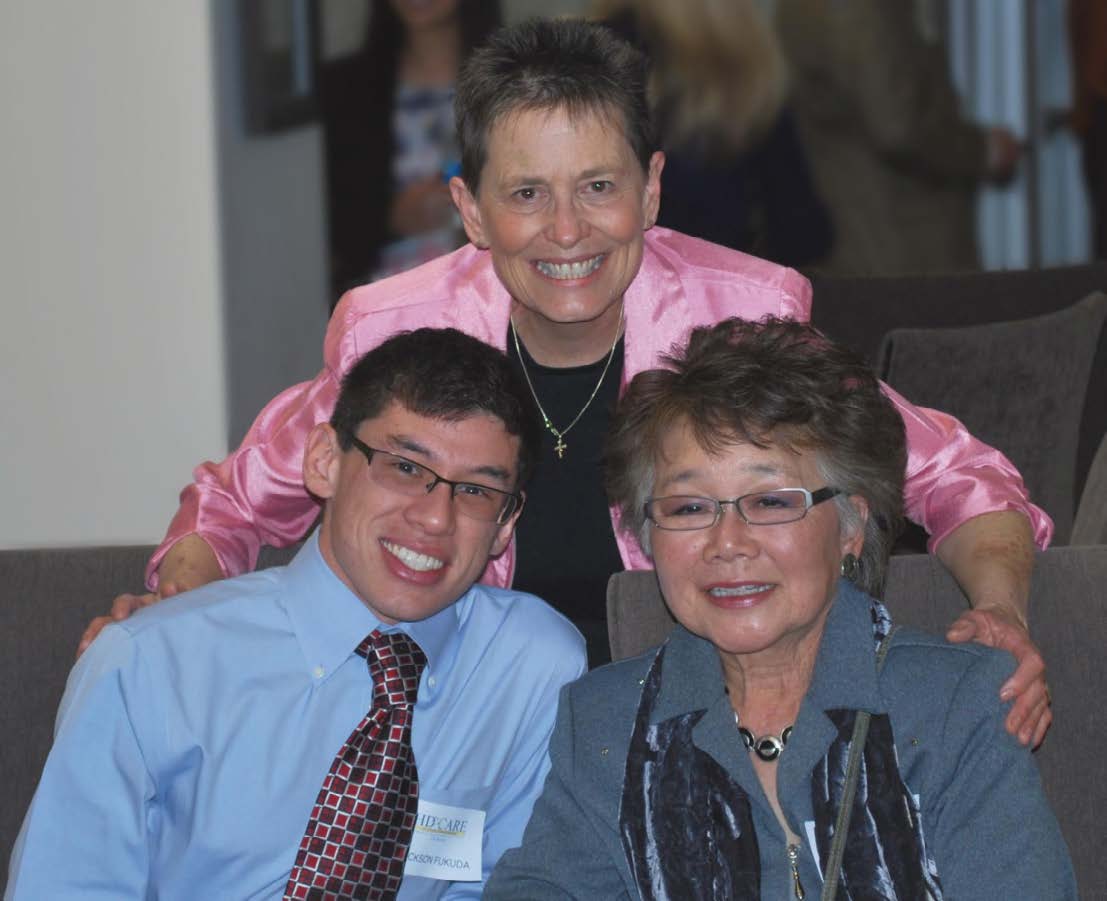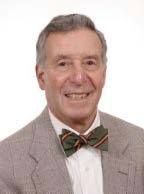
I AM A 26-YEAR-OLD GRAPHIC DESIGNER…
This is my story with arginase deficiency. A decent amount of information was told to me by my parents. I felt that they would be the best ones to tell my story when I was diagnosed and how life was for me at a very young age. At a young age they started to notice a big difference between other children my age and myself. I was growing at a lot slower rate and was clumsy. They noticed with the least amount of exercise, I would start to cough and vomit. It happened when I played, ran, laughed or just watched a VHS with my friends. They also noticed I walked differently than other children by walking high on my toes and falling down often.
After many doctor visits, lots of tests, and months of fear, a Metabolic Specialist diagnosed me with a rare genetic defect, arginase deficiency, a part of the urea cycle group of birth defects. I was just four years and nine months old. When first diagnosed, my outlook was bleak and my parents received very little information or guidance regarding the defect and how to help and support me. They were told to take me home and stop feeding me protein. Their initial information came from websites that they stumbled on. The information in 1995 was sporadic at best on urea cycle and even less on my defect, arginase deficiency. Because of the diagnosis, my family changed my diet which, instead of helping, caused me to throw up throughout the day for 110 days. I eventually lost all of my body mass and muscle, and weighed about 25 pounds at 5 1/2 years old. Everywhere we went my parents carried a sauce pan, and towels to help with my vomiting.
The only saving grace for us during that dark period, was my wonderful Pediatrician, Dr. Norah Gutrecht of Orange, California, my first guardian angel. She was willing to do anything we asked. Because of the rarity of the defect, she admitted that she could only help us find the right doctors. That was nearly impossible due to the lack of information and some doctor's unwillingness to treat such a rare disease. Several doctors become irate when asked to read information my parents were able to find or refused to call another doctor for reference information. Thankfully my parents found a wonderful organization called National Urea Cycle Disorder Foundation (NUCDF). Tish Simon, President at that time, helped us immensely. Tish was wonderful and very informative. The NUCDF was so supportive and an important part of our success. Cindy Le Mons, the current executive director of NUCDF, and her team were also an important part of the puzzle in our success.
ALL FOR ONE: (Opposite page) Jackson's family celebrates his success. "As a family we are grateful for this opportunity to tell our story and hope that we can and will help other families with arginase deficiency and urea cycle disorders."

GALAXY: My piece illustrates that often, when you or someone you know is diagnosed with a rare disease or maybe any serious disease, it often feels as if the world is crumbling and falling down around you, and life becomes chaotic. But, at the same time, being diagnosed with a rare disease can give someone a purpose and meaning. It can allow them to do something that can help others who are like them. That is how it has been for my family and me. Arginase Deficiency has allowed us to do things that can and hopefully will help people with Arginase Deficiency and Urea Cycle disorders.
Also helping us from NUCDF was Mindy Rosen, whose son also suffered from arginase deficiency. Mindy told my parents about a doctor specializing in arginase deficiency at UCLA. Dr. Stephen Cederbaum agreed to speak to my parents and we found our second guardian angel. Dr. Cederbaum was kind and understood the pressure and heartbreak we were going through. After a long telephone conversation, my parents knew I would have obstacles, but none we could not overcome. We knew that together, we could make sure I had a loving, productive, and happy life. We were lucky to find Dr. Cederbaum because he was and is the foremost authority on arginase deficiency. I must say I owe my life to Dr. Cederbaum. There were years of doctors treatments, hospital visits, and tears, but with Dr. Cederbaum and Dr. Gutrecht's encouragement, love, and support, we made it through.
As mentioned earlier, I am a graphic designer by profession. I would like to share how I found my calling as an artist
despite the fact that I have a rare disease. For as long as I can remember, I have always loved to draw and sketch. In elementary school I often turned in my homework covered in drawings and an apology.
"IT IS AMAZING TO BE DOING SOMETHING I LOVE AND AT THE SAME TIME, I'M INVOLVED WITH SOMETHING THAT CAN, AND HOPEFULLY, WILL HELP PEOPLE SUCH AS MYSELF."
During my sophomore year of high school, I began to contemplate what I really wanted to do for a career. After I had taken an art class in high school, my career path was cemented. Enrolling in college, I knew I loved art and I wanted to be an artist as a profession, but I wasn't too fond of the idea of being a visual artist such as a painter. Luckily, I found graphic design, a field where I could still create art but have a stable career.
Thus, when I entered California Baptist University (CBU), I majored in Graphic Design. My first day, I realized that graphic design was my passion and that is what I wanted to do. The idea of doing art that could affect society was intriguing. After a couple years, my major would require me to do an internship. A good friend from church gave my contact infor mation to a person she knew who was doing something similar to what I was studying. This person worked at the University of California, Irvine (UCI). He contacted me and asked if I wanted to help him with some projects at UCI. Of course I said yes. Even though it was early for my internship, I knew when opportunity arises, it is best to take advantage of it.
DOCTOR'S NOTE: ABOUT ARGINASE-1 DEFICIENCY
The patient enters the physician's practice with a complaint of progressive spasticity, a diminished rate of intellectual attainments and a diminished rate of growth and very worried parents. A battery of diagnostic tests is done and an elevated level of arginine, an amino acid, is found in the plasma. This was roughly the story with which Jackson Fukuda, the subject of an autobiographical essay that appears in Exceptional Parent in this issue, presented to my clinic. Exceptionally, and fortunately, he had no evidence of intellectual difficulty and as you can see from the story that he co-authored with his parents, he suffers no deficit today. We easily confirmed the diagnosis of arginase deficiency and began therapy that will be, in the absence of a more definitive treatment, life-long. The reason this has come about is the essence of my essay. As the readers of this magazine will know, the food that we eat and the waste that we excrete all go through a complicated series of steps that are necessary to maintain human life and health. There are several thousands of these individual steps that convert one substance into another. The partial or complete absence of most of these results in either an accumulation of the substance that is acted-upon, or a deficiency of the product of the reaction, much as a beaver dam would influence the stream in which it is constructed. These deficiencies are referred to as inborn errors of metabolism. These are inherited disor ders, most often inherited in a manner referred to by geneticists as recessive. This means that each parent is a carrier of an abnormal gene, but its effect is compensated for by the normal copy on the sister chromosome. When two abnormal genes are present the disorder expresses itself, equally in males and females. Jackson suffers from a deficiency of an enzyme by the name of arginase-1 (there are two different arginases in the body with different functions). Arginase-1 is part of the pathway called the urea cycle which takes the excess nitrogen that we have in our bodies as part of a normal diet and converts it into a harmless and easily eliminated compound call urea. In the absence of a normal functioning urea cycle, nitrogen which is toxic to the body when present in excess, accumulates. In some of the later steps in the cycle (arginase-1 is the final enzyme in the cycle), its precursor, in this case, arginine accumulates. Unlike ammonia, whose toxic effects are felt early, often presenting in the newborn period as poor feeding, lethargy and coma, the effects of arginine accumulation are more insidious, and in the absence of effective newborn screening, is usually only detected after partially irreversible brain damage has occurred. This is similar to the more frequent and well-known disorder, phenylketonuria (PKU).
Arginase-1 deficiency is a very rare disorder with a frequency estimated of between 1/500,000 to 1/million births. It occurs more frequently in founder populations in the Canadian province of Quebec and Northern Portugal and in places with high rates of consanguinity, or marriages amongst people who are related.
As I stated, the first signs that something is wrong tend to be overlooked, attributing the variation as part of the normal spectrum of developmental differences amongst individuals. That something is very wrong is usually perceived by the age of two to two-and-a-half. The child has stiff limbs, walks on their toes, falls excessively, may fail to gain new language milestones or lose them, and in many cases, the individuals fall off their growth curves. If mild elevations of ammonia are present, the individual may complain of a stomach ache, nausea and may even vomit intermittently. Patients may also have a preference for low protein foods, since the amino acids in proteins are the major source of ammonia in the diet. If untreated, the condition continues to progress with increasing spasticity, increasing reflexes, definite loss of language and awareness of the environment and in some cases death due to the effects of the brain damage that has occurred. The heart, other muscles, kidney function, and many neurological functions are unaffected. Liver function is almost always mildly abnormal and infrequently leads to liver failure. Treatment, if begun early and practiced vigorously, can reverse many of the symptoms and prevent the progression of the disorder. It consists of a diet of low protein foods such as many fruits and vegetables, an amino acid supplemental product to make up for deficiencies in the low protein diet and a low protein source of non-protein calories such as carbohydrates and fat. Individuals are given medicines that divert ammonia from urea cycle into other harmless products as well. The names associated with these products are BUPHENYL® and RAVICTI®.
Like all artificial diets, these diets are not very palatable and are dull and repetitive. Maintaining these diets over a long period of time is a burden on families, inhibits travelling, requires letters to explain why the family carries large amounts of white powders, and are often rejected by growing children who want to eat what their peers eat. Those outside of the immediate family cannot understand what is going on and may interfere with the carefully developed family routine. Efforts to decrease these burdens are welcomed by the affected patient community because of these difficulties. Imagine the growing child, adolescent and adult facing continually, the choice between tempting and quite normal foods and the knowledge that any deviation from an almost uniquely limiting diet may cause them to fall short of their developmental potential or, even worse, result in neurological dysfunction in the future. It is not a pleasant daily choice. Despite years of work and carefully designed studies in man and animals, we are unable to pin down the mechanism by which the enzyme deficiency and the elevated levels are arginine causes brain damage. This is unfortunate since we then cannot design more specific therapeutic measures to deal with the risk of the damage. Work is ongoing but the problem is not solved.
Stephen Cederbaum, MD is Professor, Emeritus of Psychiatry, Pediatrics and Human Genetics at the University of California, Los Angeles (UCLA) and has been caring for patients with Inborn Errors of Metabolism for more than 45 years. He first encountered a patient with arginase 1 deficiency in 1972 and decided to make it the focus of his professional career. He lives in Santa Monica, CA with his wife. They have two grown children.

I assisted him as a graphic artist and almost immediately, I was helping him on major projects. I worked hard and was doing something I enjoyed. It was a dream come true and being able to work on such a significant project made it that much better.
While interning at UCI, I was working in the medical field, specifically neurological disorders. Both my internship, and later my Graphic Artist/Print Specialist job, involved neurological disorders, primarily dementia, Alzheimer's disease and Huntington's disease. It was a real honor to be involved in something that was helping others, although not directly but indirectly. Plus, since my grandmother had dementia and later Alzheimer's disease, it felt that my work was contributing to the goal of helping people like her. After graduating from CBU, I settled in, working at UCI. I greatly enjoyed my work, utilizing what I studied, but also that I was working in a field that could and was helping people.
Ultimately, my supervisor moved on and my involvement with UCI ended. My supervisor encouraged me to continue forward, look for new opportunities and use all of my graphic design skills.
Luckily, shortly after my work at UCI ended, Dr. Cederbaum introduced me to Meredith Grimm of Aeglea Biotherapeutics. She came to my house, met me and my family and we shared my story with arginase seficiency.
Early 2016, Meredith asked if I had an interest in assisting her on a website for Aeglea. The website's focus was going to be about arginase deficiency, as well as urea cycle disorders. It was going to be a patient advocacy website that would hopefully benefit current and new patients with overcoming the greatest hurdle of having arginase deficiency.
Of course I said yes, I was thrilled and had a personal stake in the project. I assisted Meredith and Aeglea for nearly two years and have enjoyed every moment of my efforts.
Additionally, I have assisted Aeglea with an ad for the Genetic Metabolic Dietitians International and provided them with designs that were used in the most recent Aeglea Investigator Meeting in March. It is amazing to be doing something I love and at the same time, I'm involved with something that can, and hopefully, will help people such as myself.
Last year, Meredith informed me about an art competition for people with Rare Diseases. I recently entered the Rare Artist competition for the second time. The piece I submitted this year is titled "Galaxy" (see page 41) It is in the Adult Digital and Photography category.
My life has been full of curves, speed bumps, one big diet and loads of blessings.
We have all learned to work around the obstacles and people's assumptions of what is going on in our family. My family knew from the beginning it was not going to be easy, but have found joy, friendship, love, and compassion in the journey and have grown as a family.

WINDS OF CHANGE: Meredith Grimm asked if I would assist her on a patient advocacy website for Aeglea, focusing on arginase deficiency and urea cycle disorders, that would help current and new patients overcome thier hurdles.
I encourage anyone or any family going through tough medical times, be patient with one another, talk, love each other, realize not everyone deals with medical situations the way you think they should.
Having a rare disease is challenging at best and arginase deficiency is no exception and I learned at a young age to always do my best with what has been given me. I was given arginase deficiency and several guardian angels to walk with me on my journey. As a family we are grateful for this opportunity to tell our story and hope that we can and will help other families with arginase deficiency and urea cycle disorders.•